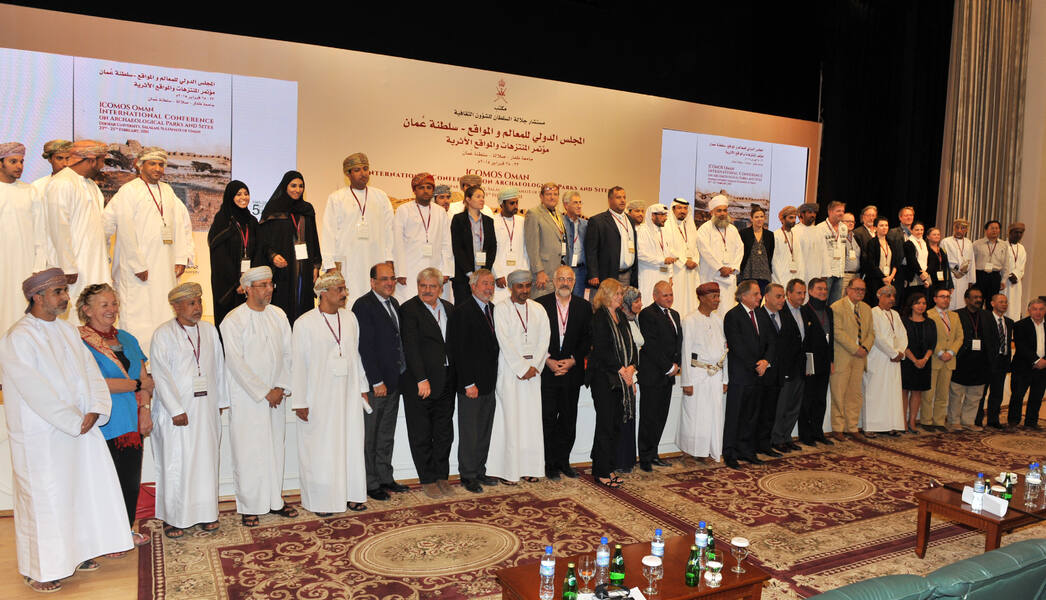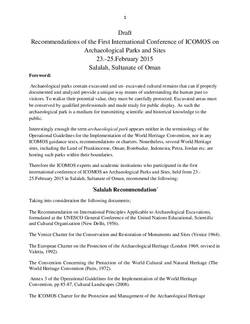International Conference on Archaeological Parks and Sites held in Oman 23-25 February 2015
A major international conference was organized by ICOMOS Oman at Dhofar University in Salalah, Sultanate of Oman to review archaeological heritage identification, management, and conservation, and to explore new approaches.
Among the participants were experts from different parts of the world, representatives from Ministries and heritage agencies, Ambassadors of UNESCO Member States, the Chairperson of UNESCO’s Executive Board, partner organizations including the Director of WHC-ARC Bahrain, the Director General of ICCROM, the Vice President of ICOMOS’ International Scientific Committee on Archaeological Heritage (ICAHM), the Programme Director of WMF and the Deputy Director of UNESCO’s Heritage Division. H.E. Abdulaziz Bin Mohammed Al Rowas, Adviser to His Majesty the Sultan for Cultural Affairs, and Chair ICOMOS Oman, hosted the conference.
Over the course of two days, experts, site managers and researchers in archaeology highlighted the need to enhance governance and management of different types of archaeological heritage, from sites to parks, landscapes, heritage routes and monuments. They also discussed the participation of local communities, visitor management, and interpretation for tourists, the general public and especially youth. More than 30 working papers were presented, and a summary of these are available as an attachment below. The participants also visited several components of the World Heritage property of the Land of Frankincense including the remains of the caravan oasis of Shisr/Wubar and the affiliated ports of Khor Rori and Al-Baleed.
The International Conference on Archaeological Parks and Sites concluded with the Salalah Declaration, also available as an attachment. The Declaration calls for a broader recognition of Archaeological Parks as a tool for conservation of archaeological sites on the one hand, and their presentation and interpretation as a means to understand the shared past of humanity on the other hand. This was also understood as a contribution to peace and intercultural dialogue.


